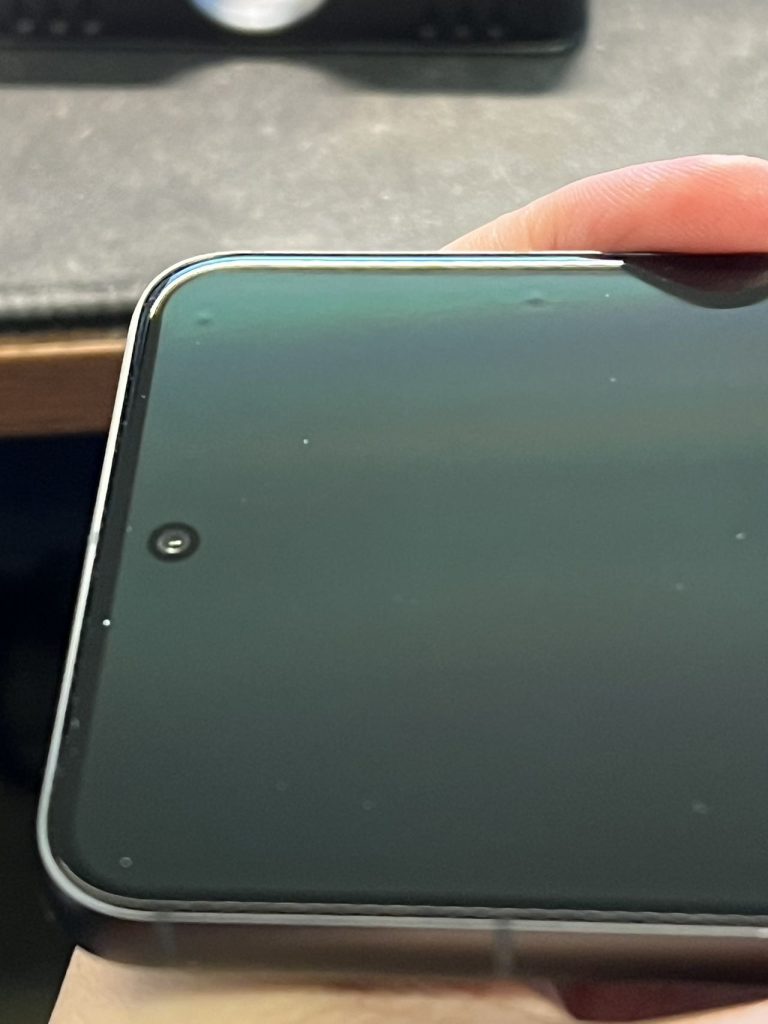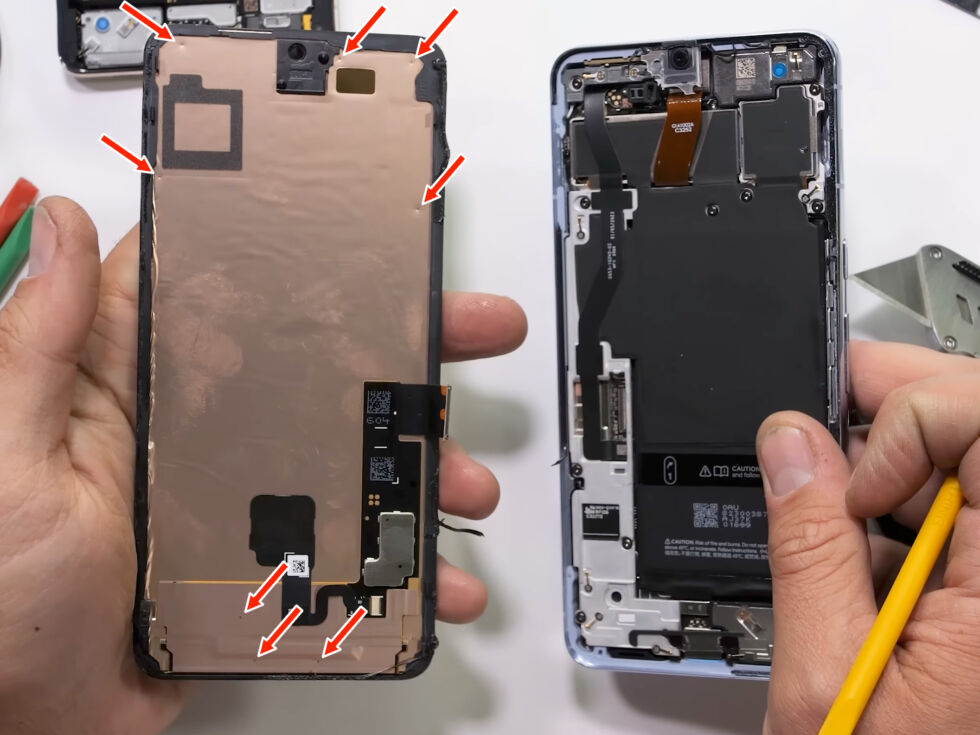Display “bumps” are components pushing into the OLED panel.

Pixel phones always seem to ship with some bizarre hardware malady, and this year it’s that not all the parts fit inside the phone quite right. Some users are reporting “bumpy” screens on their Pixel 8 and 8 Pros. The bumps aren’t in the top surface, which is still smooth glass, but in the OLED display under the glass, which can show raised, usually circular bumps. It looks like components inside the phone are pressing up against the back of the OLED display, resulting in visible bumps under the right lighting conditions. Google gave a statement about the issue to 9to5Google and says it’s nothing to worry about.
That’s certainly an interesting take. All phones come with “new” displays, so what exactly does that first sentence mean? The bumps definitely aren’t on every Pixel 8, and even the bumpy displays aren’t noticeable in normal usage. The pictures and videos out there all involve people shining flashlights into a turned-off display, so it’s not the end of the world. It’s just worrying to have the delicate OLED panel be dented by internal components. Is this going to be ok long-term? Does this make the glass or OLED panel more susceptible to breaking after a shock? It’s certainly not normal phone construction.Advertisement

Match up anyone’s pockmark video with a teardown and you’ll usually be able to spot the offending item. It’s usually screw heads, spring clips designed to ground some component to the display copper, or the corners of some other component poking through. No one item accounts for every pockmark, so the components seem just a little too close to the display on some models. YouTuber JerryRigEverything actually took apart a Pixel 8 Pro that had a bumpy screen. It wasn’t noted in the video, but freeze-frame it and you’ll see some pretty alarming indents in the copper sheet on the back of the display that you can try to match up to the other half of the phone. They are almost puncture marks!
It’s also strange that this happens only on some Pixel 8s, indicating it’s a QC issue and not some purposeful decision in the never-ending quest for device thinness. So what’s going on, Google? Are some of the screws a bit too long? Are things not being torqued-down properly? If you really want to smash components together like this, you know you can get screws in flat-head, flush-mount style, right?
The tell-tale sign of this being an actual problem will be an OLED display that’s internally broken but doesn’t have a shattered glass cover. We’ve yet to see this happen, but if it does, you know where to send an email.
Listing image by Ron Amadeo




